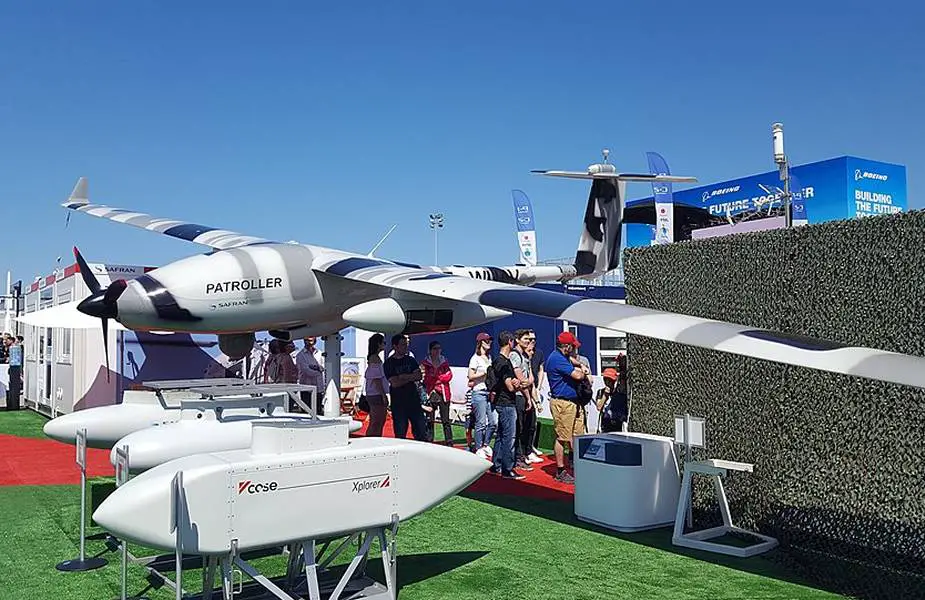According to an Opex360 article by Laurent Lagneau published on May 5, the report attached to the draft military programming law (LPM) 2024-30 contains errors. The report states that the Ground Force (Army) will have 17 Patroller tactical drone systems (SDT) by 2030, which is 12 more than planned. However, each SDT consists of 5 Patroller drones and 2 ground stations, making this a significant increase in effort. This is not surprising, as the Minister of the Armed Forces, Sébastien Lecornu, had emphasized the importance of drones before the publication of the LPM 2024-30 project.
Follow Air Recognition on Google News at this link
 Safran Patroller displayed at the Le Bourget airshow 2019 (Picture source: Wikipedia/ Gervaisjc)
Safran Patroller displayed at the Le Bourget airshow 2019 (Picture source: Wikipedia/ Gervaisjc)
The report suggests that tactical drone systems with diverse and useful armaments will enhance operational efficiency. However, the Army will not receive 85 Patroller drones, as the report implies. During a hearing in the Senate on May 3, Mr. Lecornu acknowledged that a mistake had been made in the report, and the actual target remains at 5 systems, which equals 25 drones and 10 ground stations.
On May 4, Mr. Lecornu confirmed that the Army will receive 5 systems (28 drones), along with financing for blocks that provide intelligence or fire support. The Patroller project was initiated in April 2016, and Safran was awarded the contract by former Minister of Defense Jean-Yves Le Drian. The project initially included two operational systems and a 4-vector system for training. However, the LPM 2019-25 raised the target to 5 operational systems by 2030.
The Patroller, which was certified by the Directorate General of Armaments in February, is based on the German Stemme S15 motorglider and can fly at an altitude of 20,000 feet for 20 hours. It is equipped with a Euroflir 410 optronic ball, a laser designation pod, an electronic warfare load, and a PicoSAR AESA radar provided by Leonardo. These features allow it to detect mobile land targets and collect images using synthetic aperture radar (SAR).
















